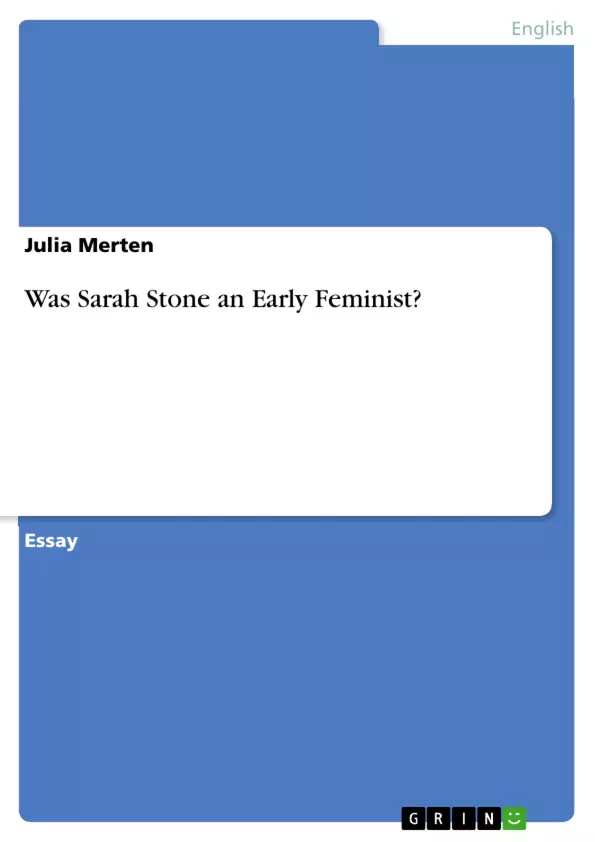This essay is an explanation on why the British midwife Sarah Stone from the 18th century can be considered as an early feminist. Sarah Stone was a midwife in the eighteenth century England.
By being married to an apothecary she had access to several works of medicine, which enabled her education by reading. She was trained in the practice of midwifery by her mother Mrs. Holmes who taught her in Somerset the exercise for six years.
Furthermore - unusually for a woman at that time - she was given the opportunity to study anatomy and be present at autopsies. Stone started practicing midwifery actively in 1701 in the town of Bridgewater. She then moved to Taunton in 1703 and practiced there for 16 years before moving to Bristol in 1719 and finally to London in 1737, the same year her work A Complete Practice of Midwifery was published. By that time she has been a midwife for 36 years.
Inhaltsverzeichnis (Table of Contents)
- Sarah Stone - An Early Feminist?
- Male Midwives and the Rise of Obstetrics
- The Woman Question
- Feminism and the 18th Century
Zielsetzung und Themenschwerpunkte (Objectives and Key Themes)
This text examines the life and work of Sarah Stone, an 18th century midwife, and investigates whether she can be considered an early feminist. It explores the changing landscape of midwifery in the 18th century, particularly the rise of male midwives and the impact of new technologies like forceps. The text also delves into the broader "Woman Question" of the era, including women's access to education and their roles in society.
- The changing role of midwifery in 18th century England
- Sarah Stone's contribution to the field of midwifery
- The emergence of male midwives and the impact of forceps
- The broader "Woman Question" and women's access to education
- Sarah Stone's potential as an early feminist figure
Zusammenfassung der Kapitel (Chapter Summaries)
- This chapter introduces Sarah Stone, a skilled and influential midwife in 18th century England. It highlights her commitment to teaching fellow midwives and her advocacy for women's competence in the field. The chapter also raises the question of whether Stone can be considered an early feminist given her work and beliefs.
- This chapter analyzes the reasons behind the growing presence of male midwives in the 18th century, focusing on the introduction of forceps and the changing societal attitudes towards childbirth. It examines the role of forceps in improving childbirth outcomes and the conflicting opinions on their use, particularly by female midwives like Sarah Stone.
- This chapter delves into the broader "Woman Question" of the 18th century, exploring the societal constraints placed on women, particularly their limited access to education. It examines the work of Mary Astell, an early advocate for women's education, and the growing influence of female authors and intellectuals.
Schlüsselwörter (Keywords)
This text examines the fields of midwifery, women's education, and early feminism in 18th century England. It explores key themes such as the changing role of women in the medical field, the impact of new technologies like forceps, and the broader "Woman Question" of the era. Key figures discussed include Sarah Stone, Mary Astell, and early male obstetricians.
- Quote paper
- Julia Merten (Author), 2016, Was Sarah Stone an Early Feminist?, Munich, GRIN Verlag, https://www.grin.com/document/375454



